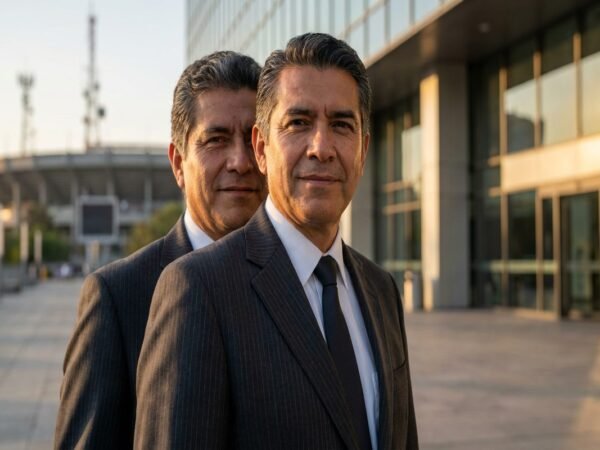Introduction to the Peter Scully Case
Few criminal cases have captured international attention quite like that of Peter Scully, an Australian man whose heinous crimes against children in the Philippines shocked the world. This case stands as one of the most significant international child exploitation prosecutions in recent memory, fundamentally reshaping how law enforcement agencies tackle cross-border child protection efforts. The ripple effects of Scully’s conviction continue to influence legal frameworks and policy decisions across multiple countries.
What makes this case particularly significant isn’t just the severity of the crimes, but how it exposed the Philippines as a dangerous hotspot for child sexual exploitation. The successful prosecution required unprecedented international cooperation and has since become a blueprint for similar investigations. Today, the Scully case remains a stark reminder of the vulnerabilities children face in our increasingly connected world.
Background and Early Life of Peter Scully
Born on a cold January day in 1963 in Melbourne, Peter Gerard Scully appeared to lead an unremarkable life for most of his early years. Growing up in Australia’s cultural capital, he eventually settled in the suburban community of Narre Warren with his wife and two children. To neighbors and acquaintances, the family seemed ordinary—nothing suggested the darkness that would later emerge.
During court proceedings, Scully made disturbing claims about his own childhood, alleging sexual abuse by a priest. While these allegations remain unverified, they paint a troubling picture of a man who may have experienced trauma before inflicting it on others. His early adult life appeared stable, with no obvious warning signs of the criminal behavior that would follow.
The turning point came in 2011 when mounting personal and financial pressures began to overwhelm Scully. Facing what court documents describe as significant debts and personal problems, he made a fateful decision that would change countless lives forever. Rather than confronting his difficulties in Australia, Scully chose to flee—setting his sights on the Philippines, a choice that would prove catastrophic for dozens of innocent children.
Criminal Activities in the Philippines
Scully’s arrival in Manila marked the beginning of what prosecutors would later describe as a systematic reign of terror against vulnerable children. Between 2012 and 2015, he constructed an elaborate criminal enterprise that preyed on the Philippines’ most defenseless population. His targeting of impoverished children wasn’t accidental—it was a calculated strategy that exploited economic desperation.
The scope of Scully’s operations was staggering. Operating through a dark web platform called “No Limits Fun,” he created a marketplace for the most depraved content imaginable. Videos of child sexual abuse commanded premium prices, with some selling for as much as $10,000. Among these productions, one video called “Daisy’s Destruction” became particularly notorious, earning infamy in law enforcement circles worldwide.
Court records paint a horrifying picture of Scully’s methodology. Over his years in the Philippines, he victimized approximately 75 children through rape, torture, and systematic abuse. In at least one documented case, his crimes escalated to murder. The commercial nature of his activities—carefully documenting abuse for profit—distinguished this case from typical child exploitation prosecutions and demonstrated a level of calculated cruelty that shocked even experienced investigators.
Investigation and Arrest
Breaking Scully’s criminal network required an extraordinary level of international cooperation. The National Bureau of Investigation (NBI) of the Philippines spearheaded the domestic investigation, working closely with Australian authorities and other international partners. Digital forensics experts played a crucial role, painstakingly tracking Scully’s online footprint and identifying victims scattered across the Philippines.
The investigation culminated on February 20, 2015, when NBI agents surrounded Scully’s residence. Months of careful surveillance and evidence gathering had led to this moment. The arrest operation itself was swift, but the investigation that preceded it represented hundreds of hours of meticulous police work across multiple countries.
What investigators discovered during the arrest exceeded their worst expectations. Digital devices contained extensive evidence of Scully’s crimes, while financial records revealed the international scope of his operations. Perhaps most importantly, victim testimony began to emerge, providing crucial evidence that would later secure multiple convictions. The comprehensive nature of the evidence collection would prove instrumental in ensuring that Scully faced justice for the full extent of his crimes.
Legal Proceedings and Court Decisions
The Philippine legal system faced an unprecedented challenge in prosecuting Scully’s crimes. The sheer volume of charges and the international nature of the case required careful coordination between multiple court jurisdictions. The first major breakthrough came in 2018 when Scully and his former partner Carme Ann Alvarez received life sentences for human trafficking and rape involving seven children—one of whom had been murdered and buried on property the pair had rented.
November 2022 brought another significant development when Scully received an additional 129-year sentence. This conviction covered 60 separate offenses related to child sexual abuse, demonstrating the systematic nature of his crimes. His girlfriend Lezyl Margallo received 126 years, while two accomplices were sentenced to nine years each. The defendants’ decision to enter plea bargaining agreements expedited the proceedings while ensuring substantial sentences.
The Philippine Supreme Court’s 2024 decision to uphold Scully’s life sentence represented the final chapter in the legal proceedings. Associate Justice Jhosep Y. Lopez authored the decision, which affirmed the conviction under Republic Act No. 9208—the Anti-Trafficking in Persons Act of 2003. This ruling established crucial legal precedents that will guide future prosecutions of similar cases throughout the Philippines and potentially influence international legal frameworks.
Sentencing and Current Status
Today, Peter Scully sits in Cagayan de Oro City jail, serving what amounts to multiple life sentences plus 129 years. The mathematical impossibility of serving such a sentence reflects the court’s determination to ensure Scully never regains his freedom. Financial penalties include PHP 5 million in fines and PHP 600,000 in compensation payments to each victim—though collecting these funds remains challenging given the defendants’ limited resources.
The differentiated sentencing of Scully’s co-defendants reflects the court’s careful consideration of individual culpability. While Scully received the harshest punishment as the ringleader, his accomplices faced sentences proportionate to their involvement. This approach demonstrates the Philippine legal system’s commitment to proportional justice while ensuring all participants face consequences for their actions.
For the victims and their families, these sentences represent a form of justice, though the trauma inflicted can never be fully undone. The compensation orders, while symbolically important, cannot restore what was taken from these children. The focus now shifts to rehabilitation and support services for survivors—a challenge that extends far beyond the courtroom.
Broader Context: Child Exploitation in the Philippines
The Scully case illuminated a disturbing reality about the Philippines’ vulnerability to child exploitation. A comprehensive 2020 report by the International Justice Mission identified the country as a global hotspot for online sexual abuse, citing a perfect storm of contributing factors. Entrenched poverty creates desperation that criminals exploit, while high internet connectivity provides the technological infrastructure for abuse, and opaque international money transfer systems facilitate payments for illegal content.
Statistics from a joint study by UNICEF, Interpol, and ECPAT International revealed the staggering scope of the problem. Their research found that roughly one in five Filipino children between ages 12 and 17 who use the internet have experienced some form of online sexual abuse. These numbers represent not just statistics, but real children whose lives have been forever altered by predators like Scully.
Recognizing the severity of the crisis, the Philippine government declared an “all-out war” on online sexual exploitation of children in August 2022. Justice Secretary Jesus Crispin Remulla announced enhanced prosecution efforts and stronger enforcement measures, though the long-term effectiveness of these initiatives remains to be seen. The challenge lies not just in enforcement, but in addressing the underlying economic and social conditions that make children vulnerable in the first place.
International Implications and Law Enforcement Response
The successful prosecution of Peter Scully has become a case study in international law enforcement cooperation. The seamless collaboration between Australian and Philippine authorities demonstrated that national borders need not be barriers to justice when it comes to protecting children. This cooperation model has since been replicated in other international child exploitation investigations.
Law enforcement agencies worldwide have analyzed the investigative techniques used in the Scully case, incorporating lessons learned into their training programs and operational procedures. The case highlighted the critical importance of digital forensics, victim identification protocols, and cross-border information sharing. These insights have strengthened the global response to similar crimes.
Perhaps most importantly, the case has influenced policy discussions about international frameworks for child protection. The Scully prosecution demonstrated both the possibilities and limitations of current legal structures, leading to calls for enhanced international cooperation mechanisms. Organizations working to combat child exploitation have used this case to advocate for stronger victim assistance programs and more robust international legal frameworks.
Conclusion
The Peter Scully case represents both a triumph of justice and a sobering reminder of the work that remains in protecting children worldwide. His prosecution and conviction proved that even the most sophisticated international criminals can be brought to justice when law enforcement agencies work together effectively. The legal precedents established through this case continue to influence prosecutions and policy development across multiple countries.
Yet the case also exposes uncomfortable truths about the conditions that enable such crimes. The poverty, technological vulnerabilities, and regulatory gaps that Scully exploited persist in many regions around the world. While his conviction removed one predator from circulation, the underlying factors that made his crimes possible require sustained attention and comprehensive policy responses.
The true measure of the Scully case’s impact will be seen in the years to come—in the children protected by stronger laws, the criminals deterred by enhanced enforcement, and the survivors supported by improved assistance programs. His conviction marked the end of one man’s reign of terror, but it also marked the beginning of a more determined global effort to protect the world’s most vulnerable children. In that sense, the legacy of this dark chapter may ultimately be one of hope and renewed commitment to child protection worldwide.
















